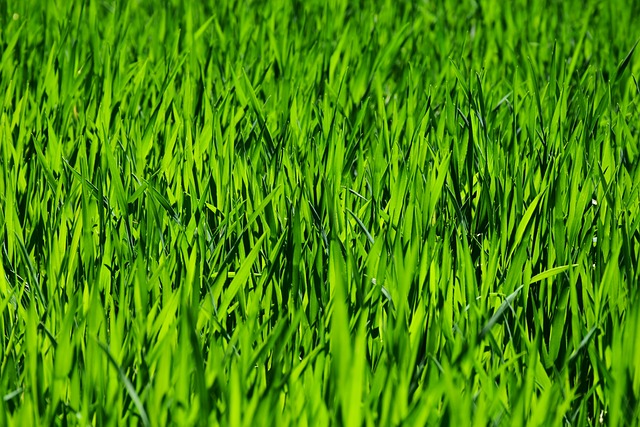The article provides insights on enhancing outdoor spaces through a blend of advanced lawn care techniques and sustainable landscaping design. It underscores the significance of soil testing and pH adjustment for healthy turf, promotes efficient irrigation systems to conserve water, and advocates for native plants and xeriscaping to support biodiversity and lower maintenance needs. These practices not only create visually appealing environments but also align with current ecological trends, making outdoor spaces both a serene haven and a testament to modern sustainability in lawn care and landscaping. Recent years have seen a trend towards eco-conscious garden maintenance, where organic approaches are preferred for their environmental benefits and cost savings. The use of compost and natural fertilizers is commonplace to bolster soil health while minimizing environmental impact. Homeowners are also increasingly opting for xeriscaping and drought-resistant plants as water-saving alternatives that still afford beautiful outdoor areas. Native plant species are becoming more prevalent, reflecting a commitment to preserving local ecosystems and fostering wildlife habitats. Practical elements like rain gardens and composting zones further emphasize the dedication to sustainable practices within residential landscaping, contributing to stormwater management and soil enrichment while offering a tranquil retreat that embodies environmental stewardship and sustainable lawn care and landscaping.
Embark on a transformative journey of your residential outdoor spaces with our latest feature, “Residential Outdoor Spaces Transformed.” This article delves into innovative strategies in lawn care and landscaping that will revitalize your yard into an outdoor oasis. Explore sustainable practices for creating lush, vibrant environments, enhancing both the aesthetic appeal and ecological balance of your home’s exterior. Elevate your garden game with insights from our expert contributors in “Revitalizing Your Outdoor Oasis: Innovative Strategies in Lawn Care and Landscaping” and “Creating a Lush Retreat: Sustainable Practices for Vibrant Outdoor Spaces.” Uncover the potential of your backyard today.
- Revitalizing Your Outdoor Oasis: Innovative Strategies in Lawn Care and Landscaping
- Creating a Lush Retreat: Sustainable Practices for Vibrant Outdoor Spaces
Revitalizing Your Outdoor Oasis: Innovative Strategies in Lawn Care and Landscaping

Revitalizing your outdoor oasis can be achieved through a blend of innovative strategies in lawn care and landscaping that enhance both the aesthetic appeal and ecological balance of your space. Advanced lawn care techniques, such as soil testing and pH adjustment, ensure a healthy foundation for your turf, promoting vigorous growth and resilience against pests and diseases. By integrating smart irrigation systems, you can optimize water usage and maintain a lush, green landscape even during periods of drought or extreme temperatures.
In landscaping, the trend is towards creating sustainable and low-maintenance environments. The use of native plants, for instance, not only supports local biodiversity but also reduces the need for frequent upkeep. Additionally, incorporating xeriscaping principles can drastically cut down on water consumption while still delivering visual interest through diverse plant textures and structures. These environmentally conscious approaches not only transform your outdoor space into an oasis of beauty but also contribute to a more sustainable world, making your home both a sanctuary and a statement of modern ecological responsibility.
Creating a Lush Retreat: Sustainable Practices for Vibrant Outdoor Spaces

In recent years, the concept of residential outdoor spaces has undergone a significant transformation, with an emphasis on creating lush retreats that are both sustainable and vibrant. Homeowners are increasingly turning to eco-friendly lawn care practices as a cornerstone of this transformation. By adopting organic maintenance methods, they ensure that their outdoor spaces are not only aesthetically pleasing but also contribute positively to the environment. The use of compost and natural fertilizers supports soil health, reduces chemical runoff, and promotes biodiversity. Additionally, xeriscaping and the installation of drought-resistant plants have become popular solutions for conserving water while maintaining a visually appealing landscape. These sustainable practices not only cater to environmental concerns but also offer long-term cost savings and require less upkeep, allowing homeowners to enjoy their outdoor spaces with minimal effort.
Landscaping trends are evolving to prioritize native plant species that require less maintenance and are well-suited to local climates. This approach not only enhances the natural beauty of a property but also supports local ecosystems and wildlife habitats. The integration of garden structures, such as rain gardens and composting areas, further embodies the ethos of sustainability in residential landscaping. These features can manage stormwater runoff and enrich the soil with organic matter, respectively. The collective shift towards sustainable lawn care and landscaping is a testament to the growing awareness of our environmental footprint and the desire to create outdoor spaces that are both harmonious with nature and delightful for homeowners to enjoy.
Homeowners seeking to enhance their residential outdoor spaces now have a wealth of innovative strategies at their fingertips, as outlined in our exploration of lawn care and landscaping. By embracing sustainable practices, one can not only cultivate a lush retreat but also contribute positively to the environment. This article has highlighted transformative approaches that elevate ordinary backyards into vibrant extensions of living space, ensuring that every outdoor oasis reaches its full potential. Embracing these eco-friendly and aesthetically pleasing techniques in lawn care and landscaping ensures a beautiful and sustainable retreat for years to come.
